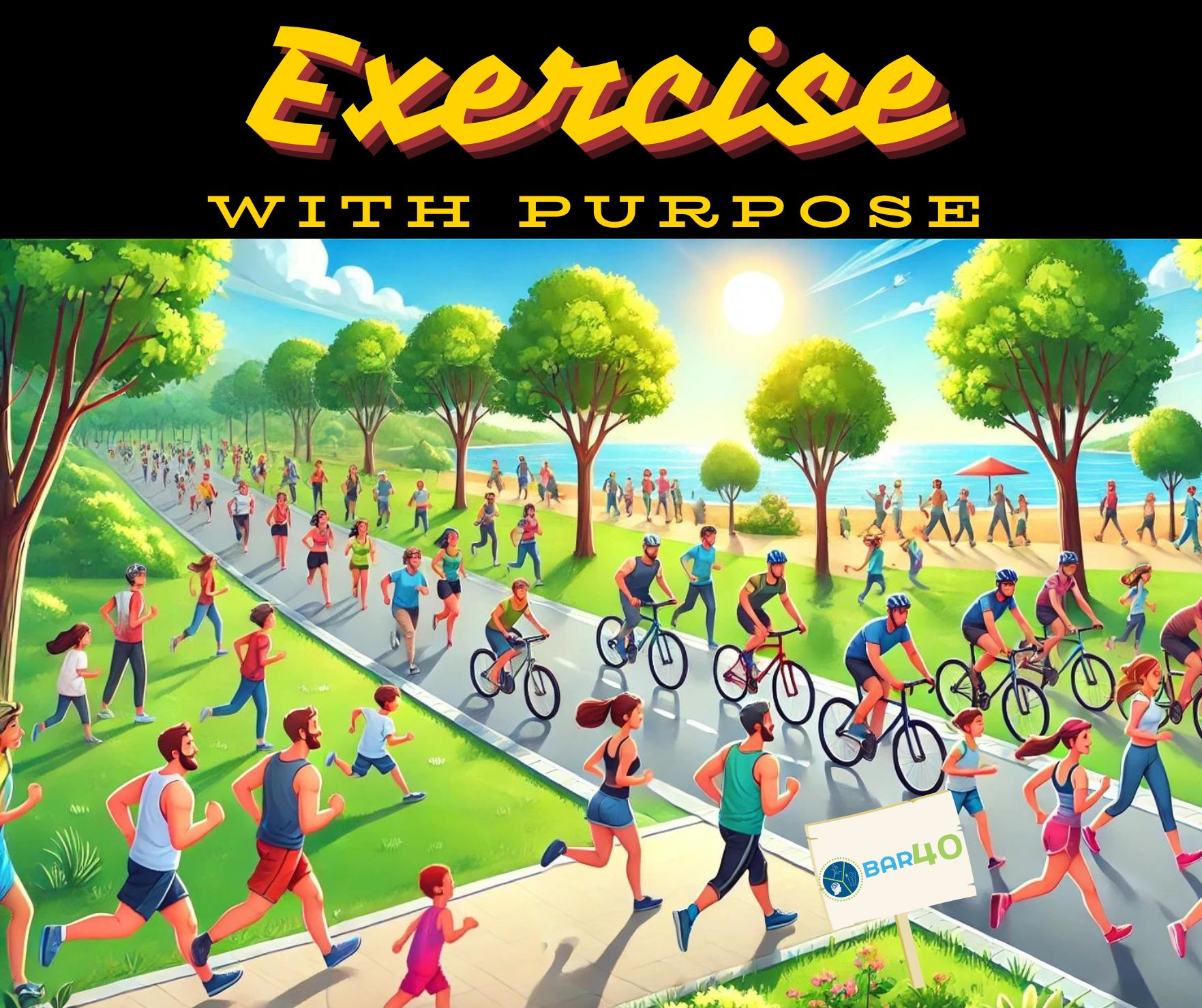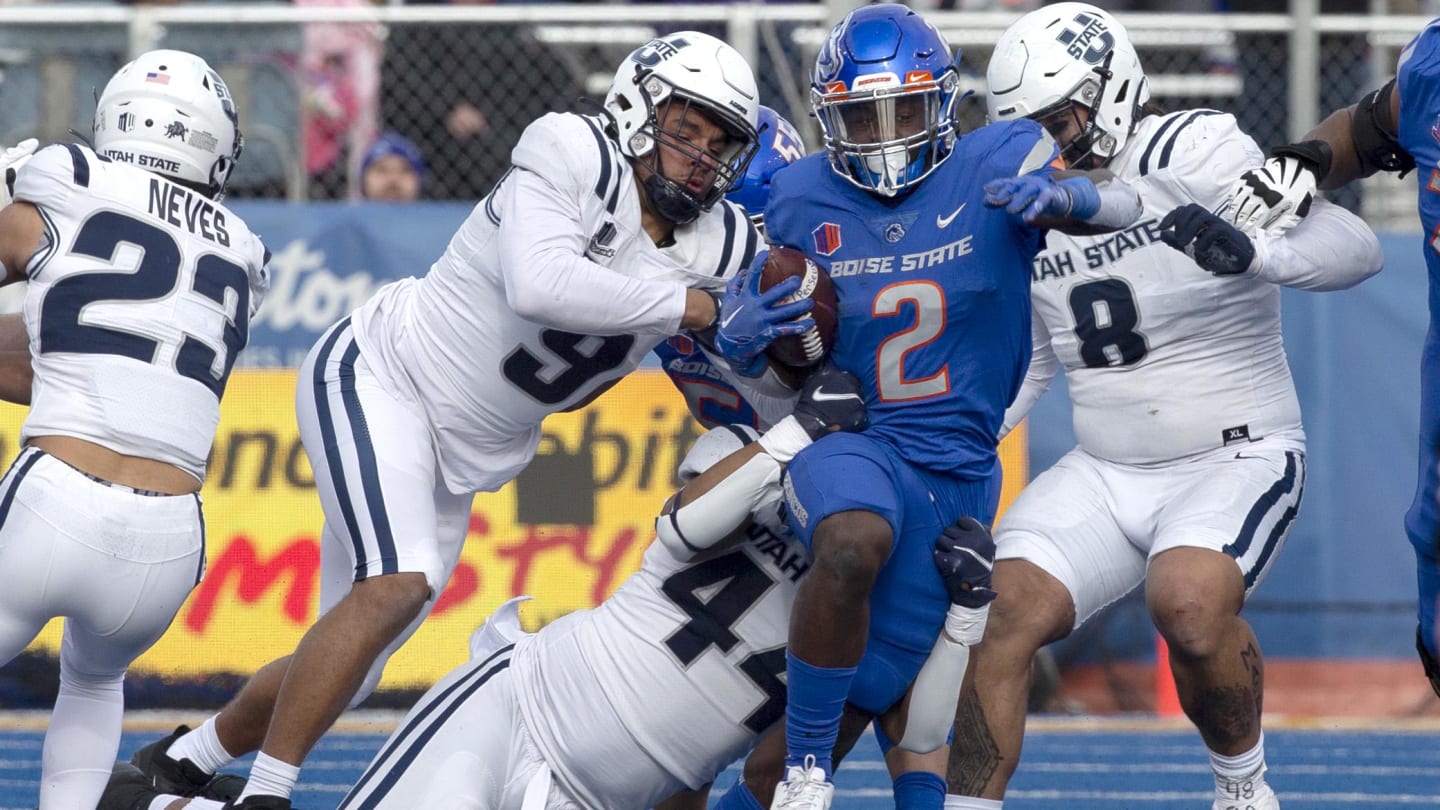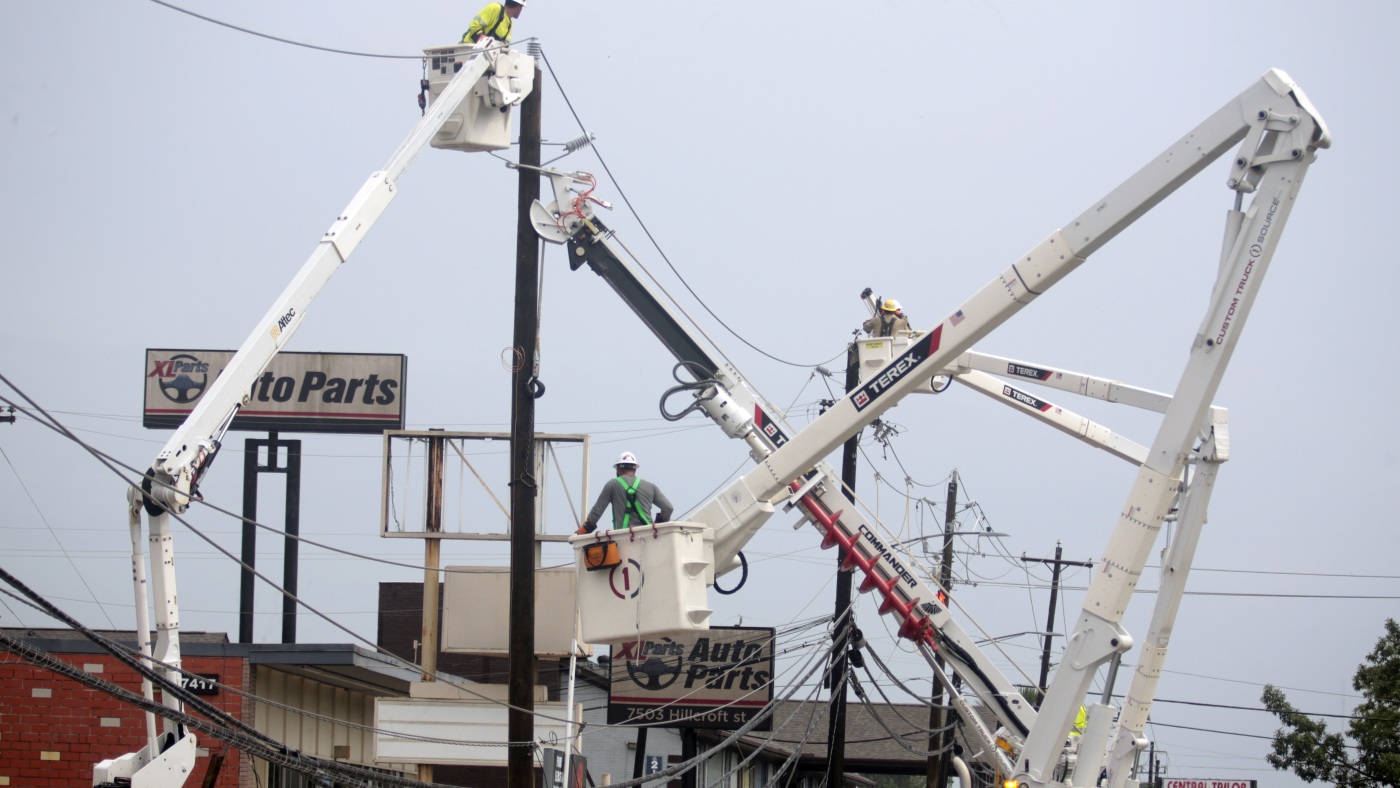Minnesota
Minnesota schools will soon require ethnic studies. Here’s what that might look like

Ella Htu hasn’t had a lot of time to think deeply about who she is or how far she’s come. As a child, she and her Karen family fled Myanmar as refugees and emigrated from Thailand to Minnesota in 2016.
Now, though, in Humboldt High School’s ethnic studies class, the 10th grader has been able to open up, sharing her experiences with classmates and helping quash negative stereotypes about Karen people.
“When I first came here, like people were saying negative things about my culture, so it made me think that we did come here to steal (this country),” said Ella, 15. “I kind of believed it until I learned about it.”
Students listen as Rachel Nader works at the whiteboard during an ethnic studies class at Humboldt High School in St. Paul on Thursday. Ben Hovland | MPR News
Understanding the political and social struggles of people of color, Indigenous communities and immigrants is one the goals of St. Paul’s ethnic studies classes. It’s important enough to the district that it recently made the classes a graduation requirement.
MPR News is supported by Members. Gifts from individuals power everything you find here. Make a gift of any amount today to become a Member!
Similar classes will soon be required across all Minnesota districts. State lawmakers have taken steps to make ethnic studies available in schools statewide. By the 2026-27 academic year, schools must offer ethnic studies as a course that meets social studies, language arts, arts, math or science credits.
A parallel effort is underway to bake ethnic studies into the state’s updated state social studies standards. Following a year of scrutiny including public hearings, a current draft of the proposed standards includes language requiring ethnic studies. An administrative law judge is expected to make a final decision on their inclusion by Jan. 5. Supporters say requiring the studies is crucial to Minnesota building a future where its growing ethnicity is understood and respected. Critics say the effort will only divide Minnesota more.
Ethnic studies program manager Mouakong Vue chats with Ramla Mohamed during class at Humboldt High School in St. Paul on Thursday.
Ben Hovland | MPR News
A day spent in ethnic studies class at Humboldt High helps to understand the hopes and concerns.
The 90-minute period is highly focused on student discussion and experience.
When students arrive, they find their seats and start looking at a list of terms on the board, such as “‘institutional oppression,” ”resistance” and “internalized liberation.” Instructor Rachel Nader encourages them to find real life examples. One group talks about their experience of speaking English as a second language. Some of them have been made fun of because of their accent in English. That’s a good example, says their other instructor, Cassandra LaFleur. She moves them to the next part of the exercise:
“OK, so now how can you step up to build resistance or liberation for that person being oppressed for making fun of?” she asks. “Well, we can tell them it’s a gift to be able to speak more than one language … don’t be afraid that you have an accent.”
LaFleur, who also teaches French, is leading this course for the first time. When she started learning the materials over the summer, she was concerned.
“Reading the documents, preparing to teach this class, I was like, oh, my, this is a heavy topic.”
Now, after studying and leading the course, she’s a fan. She believes it encourages students to learn about themselves and each other and to focus on ways to love and stand up for themselves. Cassandra Lafleur cleans the whiteboard in her classroom at Humboldt High School in St. Paul on Thursday.
Ben Hovland | MPR News
“Listen, I have an accent in every language that I speak. So even my first language now that I’ve been speaking English for so long,” she said. “We’re learning so much — digging deeper into our cultural background, and what does that mean?… we’re talking about self-love, how to honor yourself and like community critical consciousness.”
Conservative groups led by the Twin Cities-based Center of the American Experiment have pushed back against requiring the classes.
In emails, the organization has warned its tens of thousands of subscribers about various drafts of the new standards that could “generate fear and resentment in students belonging to some racial and ethnic groups.”
“Ethnic studies embodies a particular academic theory, and set of tools within the social sciences when you look at interpreting historical and social phenomena,” said Catrin Wigfall, a policy fellow at the center. “‘Marginalized, erased or ignored, systemic power, ways of knowing, systems of oppression?’ That is distinctive social theory and technical vocabulary for ethnic studies,” Wigfall said. “And we believe that violates the requirement that standards not have a specific teaching methodology.”
Amileydi Moreno Flores asks for clarification from teacher Cassandra Lafleur during class at Humboldt High School in St. Paul on Thursday.
Ben Hovland | MPR News
Danyika Leonard, a member of the committee that worked to draft the new standards, said the introduction of ethnic studies is a response to both established scholarship and the requests of students who want to see their perspectives and experiences taught and addressed.
“Our children, our scholars, our community, they had been asking for this,” Leonard said. “This was an opportunity to make sure that our social studies standards are inclusive, and that they embody a fuller story and they embody more perspective. And it invites other people to see themselves in, you know, see the windows and mirrors in their learning.”
For Leonard, getting ethnic studies into schools is also a way to address Minnesota’s close-to-worst-in-the-nation achievement disparities between white students and students of color. “We have an opportunity through social studies to … support better outcomes for our babies, and we know that ethnic studies supports academic outcomes,” she said. “It supports graduation, it supports increases in graduation, student engagement and student attendance. This is something that has evidence of success.”
Xue Xiong, ethnic studies specialist with the Office of Teaching and Learning at St. Paul Public Schools, talks with students during an ethnic studies class at Humboldt High School in St. Paul on Thursday.
Ben Hovland | MPR News
Much of the effort on this at the Legislature was driven by listening to students and what they wanted, said state Sen. Mary Kunesh, DFL-New Brighton.
“Their stories were absolutely heartbreaking, you know, around not feeling seen, when their cultures are made fun of or they’re targeted for something that’s going on across the world, and it doesn’t really apply to them or to their cultural heritage,” said Kunesh, who authored the bill on ethnic studies that passed this last session.
“There’s just a lot of lack of understanding, a lot of lack of information, a lot of lack of empathy,” she added. Requiring ethnic studies statewide “I feel is really going to help with those sorts of troubles for our students.” At Humboldt, Ella Htoo said she’s gained a new respect for her community, for her parents’ experiences and for the value they place on education.
The course also helped her realize some of the negative stereotypes she had about other groups in her class. Listening to other perspectives and experiences helped her realize how wrong and harmful those stereotypes were, she said, adding that she’s gained tools to help her live her values.
Inspirational posters hang from the ceiling in Cassandra Lafleur’s classroom at Humboldt High School in St. Paul on Thursday.
Ben Hovland | MPR News
“For me, it’s really important that you be kind to other people,” she said. “Not everyone knows English, and not everyone knows other people’s language. So like, just take it easy on them,” Htu said. “Everyone should have this class, because like, it makes you learn more about your language and the others.”
Her classmate, 15-year-old Ramla Mohamed agrees. “I like the people in the class and how it feels like one community because it’s like, everyone can relate to each other and relate to the same thing,” Mohamed said. “I also like how I’m learning things that I thought I knew, but I didn’t know a lot about.”

‘A heavy topic’


‘Evidence of success’



Minnesota
Commentary: Indigenous knowledge plays critical role in securing resilience of Minnesota forests

The
Leech Lake Band of Ojibwe
shares more boundaries with the federally managed National Forest System than any other tribe in the United States, with 75% of the reservation border adjoining the Chippewa National Forest in northern Minnesota.
Being in the Northwoods, timber harvesting and forest management are important to the tribe’s economy. Yet, the value of the forest extends well beyond timber production. Forests provide the Leech Lake Band a deep cultural foundation, sustaining life for humans, plants and animals, all while cleaning the air and water.
However, forest health has declined rapidly over the past two centuries. Clear-cut logging by European settlers combined with a management legacy of fire suppression and the impacts of climate change are increasingly exposing our forests to risks from severe wildfire, insects and disease and drought.
Many modern forests now lack a diversity of tree ages, especially older trees which are a vital component of a healthy and resilient forest. Old-growth forest conditions are now present on just 13% of lands within federal national forests, and here in the State of Minnesota, it’s less than half that amount.
The absence of older forests means a loss of vital habitat for important plants and animals. For example, old-growth forests are essential habitats for eagles, a doodem (clan) animal of the Leech Lake Band of Ojibwe. Eagles need very tall trees to nest and hunt, heights that can only be provided by old-growth forests. By protecting old-growth forests, we protect the vital habitat of the great American bald eagle.
While fire — including natural ignitions and cultural burning — contributes to the health of many forest ecosystems, the average acreage burned in the U.S. has more than doubled in the past half-century. The Federal Government now spends $7 billion to manage the escalating wildfire crisis. However, this $7 billion is only sufficient to conduct fuel treatments on 60 million of the 800 million forested acres nationwide.
Additionally, forests damaged by insects sequester 69% less carbon than healthy forests — the equivalent of adding 50 million tons of CO2, or the emissions of 10 million cars, into our atmosphere each year.
In light of these challenges, the U.S. Forest Service is exploring ways to restore old-growth forests as part of a strategy to increase the resilience and health of national forests, both for the benefit of people and of nature. Specifically, these agencies are looking for ways to strengthen forest resilience by incorporating Indigenous knowledge into forest management planning and practices.
Contrary to myths of “virgin” or “untouched” forests when Europeans first arrived on this continent, the evidence is clear that forests were actively taken care of by Indigenous people for thousands of generations. And it is still that way today.
Modern studies have shown that Native American land use increased the abundance of fire-tolerant, shade-intolerant and nut-producing trees up to 31 miles from Indigenous settlements. Utilizing Indigenous knowledge can help slow and even reverse the troubling trends in forest health.
The Leech Lake Band knows how important a healthy and resilient forest system is for the livelihood of those living throughout northern Minnesota. They are excited to partner with the U.S. Forest Service to share their knowledge of practices that will reduce the dangers of uncontrolled wildfires, increase long-term timber yields using sustainable forestry practices, and provide diverse habitats for numerous species, along with many other resources and values provided by healthy forests.
The reality is that the federal government does not have the capacity to adequately manage the nation’s 193 million acres of national forests alone and forest health issues do not respect political boundaries.
Fortunately, there are 574 federally recognized tribes across the United States with a deep connection to the land and a unique understanding of forest and environmental relationships learned and passed down over many generations.
Let’s expand engagement with tribes — the original stewards of these lands — and work together to address the health of our nation’s forests so everyone can receive the benefits from healthy and resilient forests.
Keith Karnes began working for the Leech Lake Band of Ojibwe in 2006 and now serves as the Division of Resource Management Forestry Director.
Minnesota
‘American Pickers’ returning to Minnesota this fall

DULUTH, Minn. (Northern News Now) – Calling all collectors, the “American Pickers” want to shop your stuff.
The History Channel duo of Mike and Robbie Wolfe will be on the road this fall, visiting Minnesota in September.
The series follows the brothers as they hunt for America’s most valuable antiques.
They’re looking for not only cool junk but cool people.
Anyone with a unique story or extraordinary collection is encouraged to contact them.
The Pickers do not pick stores, flea markets, malls, auction businesses, museums, or anything open to the public.
If you are interested in being featured on the show, send your name, phone number, location, and collection description with photos here or call (646) 493-2184.
Click here to download the Northern News Now app or our Northern News Now First Alert weather app.
Copyright 2024 Northern News Now. All rights reserved.
Minnesota
Minnesota landscaping company swaps for electronic lawn gear

Watch CBS News
Be the first to know
Get browser notifications for breaking news, live events, and exclusive reporting.
-

 World1 week ago
World1 week agoAfter Moscow, Hungary's Orbán makes surprise visit to Beijing
-

 Movie Reviews1 week ago
Movie Reviews1 week agoFilm Review: The Bikeriders – Soundsphere magazine
-

 World1 week ago
World1 week agoAustralia appoints special envoy to combat anti-Semitism
-

 California1 week ago
California1 week agoTwo arrested in connection to separate California wildfires
-

 Fitness1 week ago
Fitness1 week agoExercise with Purpose: Bar Talk with Eric Bartosz – Saucon Source
-

 News1 week ago
News1 week agoBiden tells Hill Democrats he is staying in the race | CNN Politics
-

 World1 week ago
World1 week agoIndia’s Modi makes first Russia visit since Ukraine invasion
-

 News1 week ago
News1 week agoHow to fight shrinkflation? Pay attention to unit prices at grocery stores


/cdn.vox-cdn.com/uploads/chorus_asset/file/25431702/STK201_SAM_ALTMAN_CVIRGINIA_B.jpg)












